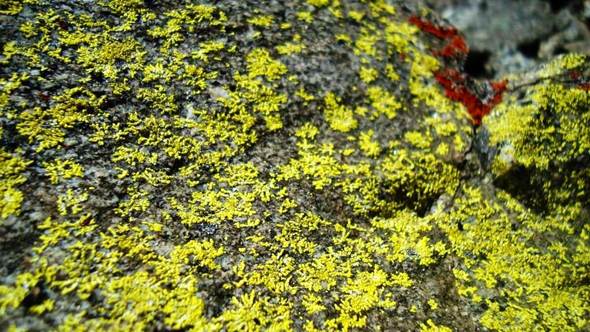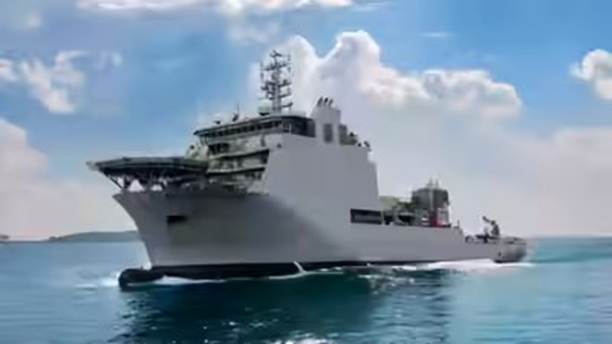Content :
- New Lichen species reveals ancient symbiosis in the Western Ghats
- INS Nistar, first indigenously designed & constructed Diving Support Vessel, commissioned in Vizag
New Lichen species reveals ancient symbiosis in the Western Ghats
Scientific Discovery & Taxonomic Significance
- New species discovered: Allographa effusosoredica, a crustose lichen, in the Western Ghats—one of the world’s eight “hottest hotspots” of biodiversity.
- First-of-its-kind: It is India’s first Allographa species confirmed with molecular sequencing—marking a milestone in lichen taxonomy.
- Research institution: Discovery by MACS-Agharkar Research Institute, Pune (autonomous DST body).
- Research funding: Backed by Anusandhan National Research Foundation (ANRF) under a polyphasic taxonomic project.
Relevance : GS 3(Environment and Ecology)

Symbiotic Complexity & Evolutionary Insight
- Lichens as symbiosis: Composed of a fungal partner (mycobiont) and a photobiont (usually green algae/cyanobacteria).
- Photobiont identified: A Trentepohlia species—significant as photobiont diversity in tropical lichens is understudied.
- Evolutionary mimicry: Despite close genetic relation to Allographa xanthospora, the morphology mimics Graphis glaucescens, blurring generic lines in Graphidaceae family.
Methodological Innovation
- Integrative taxonomy: Combined morphological, chemical, and molecular approaches—a model for future biodiversity studies.
- Molecular markers used:
- For fungus: mtSSU, LSU, RPB2
- For alga: ITS region
- Chemical profile: Contains norstictic acid—rare among morphologically similar Allographa species, enhancing chemical distinctiveness.
Ecological Relevance
- Lichen ecosystem role:
- Soil formation
- Nutrient cycling
- Bioindicators of air and climate quality
- Effuse soredia aid vegetative dispersal, suggesting resilience and colonizing potential in diverse habitats.
Geographical & Biodiversity Importance
- India-specific stats:
- Allographa effusosoredica is the 53rd Allographa species in India
- 22nd from the Western Ghats—underlines microendemism and richness of the region.
- Highlights the urgent need for molecular exploration of Indian lichen biota, especially in ecologically sensitive zones.
Static and Conceptual Anchors
- What are Lichens?
- Composite organisms formed via mutualism between fungi and photosynthetic organisms.
- Serve as bioindicators, especially for air pollution and climate change.
- Western Ghats:
- UNESCO World Heritage Site.
- Home to over 7,400 species of plants, 139 mammal species, and over 5000 documented fungi, including lichens.
- Keywords to remember:
- Polyphasic taxonomy, Trentepohlia, norstictic acid, Graphidaceae, bioindicators, Western Ghats endemism.
- Potential questions:
- Role of lichens in ecosystems
- Significance of molecular taxonomy in biodiversity conservation
- Western Ghats as a hub of microbial biodiversity
INS Nistar, first indigenously designed & constructed Diving Support Vessel, commissioned in Vizag
INS Nistar: Strategic and Technological Milestone
- India’s First Indigenously Designed & Built Diving Support Vessel (DSV) commissioned into the Indian Navy on 18 July 2025, Visakhapatnam.
- Built by: Hindustan Shipyard Limited (HSL) under ‘Aatmanirbhar Bharat’.
- Ship Type: Diving Support Vessel with deep-sea saturation diving and submarine rescue capabilities — a domain held by only a few advanced navies globally.
Relevance : GS 3(Internal Security , Defence)

Technical Capabilities
- Length: 118 meters; Displacement: Over 10,000 tons.
- Operational Depth: Capable of diving/salvage up to 300m.
- Advanced Systems:
- Remotely Operated Vehicles (ROVs)
- Self-Propelled Hyperbaric Life Boat (SPHLB)
- Diving Compression Chambers
- Serves as “Mother Ship” for Deep Submergence Rescue Vessel (DSRV) operations.
- Enables personnel rescue from distressed submarines operating well below the surface.
Strategic and Regional Significance
- Operational Enabler: Described by Naval Chief Admiral Dinesh K Tripathi as “more than a technological asset”—a force multiplier in underwater operations.
- Enhances India’s role as:
- ‘First Responder’ in regional maritime crises.
- ‘Preferred Submarine Rescue Partner’ for friendly nations in the Indo-Pacific.
- Bolsters India’s undersea warfare preparedness, submarine survivability, and salvage response.
Indigenisation and Industrial Footprint
- Indigenous Content: Over 80%.
- MSME Involvement: 120+ MSMEs participated in building INS Nistar.
- Part of the pipeline of 57 warships currently under indigenous construction.
- Aligns with ‘Aatmanirbhar Bharat’ and Make in India in Defence policy thrust.
Policy & Defence Ecosystem Integration
- Supported by:
- Department of Defence Production
- Indian Navy’s shipbuilding roadmap
- MSME-DRDO linkage ecosystem
- Boosts India’s maritime industrial base maturity and indigenous design capacity in complex support vessels.
- Demonstrates public-sector shipyard revival and capability in constructing heavy displacement vessels with cutting-edge tech.
Broader Geostrategic Context
- Reaffirms India’s naval leadership in maritime domain awareness (MDA) and HADR (Humanitarian Assistance and Disaster Relief).
- Strengthens regional security ties by offering submarine rescue interoperability with Indian Ocean Region (IOR) navies.
- Contributes to India’s aspiration of becoming a net security provider in the Indo-Pacific.
Value Addition
- Saturation diving: Diving technique allowing extended operations at great depths; requires pressurised environments.
- DSRV system: A specialized submarine rescue system used worldwide (e.g., US Navy’s Mystic class, UK’s NATO Submarine Rescue System).
- INS Nistar (Legacy): Named after a 1971 Indo-Pak war vessel used for deep-sea rescue/salvage—reviving naval heritage.



